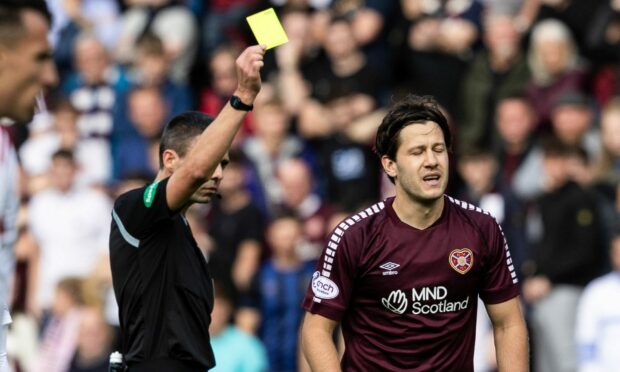Aberdeen travelled to Edinburgh to face Hearts looking for a victory to kick-start their season on Saturday – but how did the officials perform at Tynecastle?
The referee for the game was Kevin Clancy.
I was surprised to see Clancy awarded a Premiership game at the weekend, following his terrible mistake in the last set of fixtures between Kilmarnock and Ross County.
We start with the first caution of the game, shown to Peter Haring of Hearts. For me, it was a stick-on booking, as he clearly stopped a promising attack from Aberdeen on the counter.
Just a few minutes later, Graeme Shinnie would commit a similar challenge, but avoided a booking – despite shouts from the home fans.
The tackles may have been extremely similar, but it is about context, and Shinnie did not stop an attack.
Shortly after the Dons went down 1-0, we would see a fairly rare sight in football: a foul throw was awarded against Aberdeen, with a law, which is often ignored, actually enforced for a change. New signing Stefan Gartenmann would take too many forward steps before releasing the ball from his hands, resulting in ref Clancy – correctly – awarding a throw-in the other way to Hearts.
The Dons’ Leighton Clarkson then picked up a silly yellow card for blocking a quick free-kick from being taken. It was a needless caution (again, correctly given) considering Clancy was mid-conversation with an Aberdeen player with plenty of bodies around him when it was taken and he would have likely ordered the set-piece to be retaken anyway.
Perhaps the biggest call of the game came just after the half-hour mark, when Shinnie went down under the challenge of Haring near the edge of the Hearts penalty box.
To me, it is clear Shinnie got to the ball first and was then taken out by Haring, so it should have been a free-kick – and easily a second yellow.
It was unfortunate the challenge happened outside the box so VAR could not intervene and correct what was a refereeing error.
To make matters even worse, Haring was involved in another flashpoint just after half-time.
He again committed a late challenge, though Clancy allowed play to go on. But it was clear and obvious it was a foul. And if Haring wasn’t already on a yellow card, I am sure the referee would’ve booked him for the challenge once the passage of play came to a stop. He still should have.
I think Haring was incredibly lucky to not receive a second yellow in the game, and Hearts would smartly take the Austrian off shortly after, avoiding any sending off in the latter stages.
Finlay Elder was a registered referee for six years and a category 5 official from 2019, with experience in the Highland League, Juniors and Club Academy



Conversation